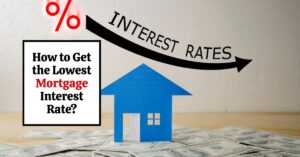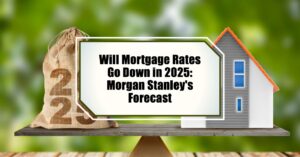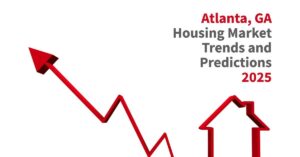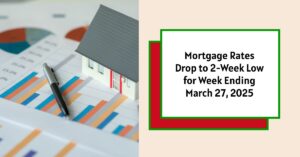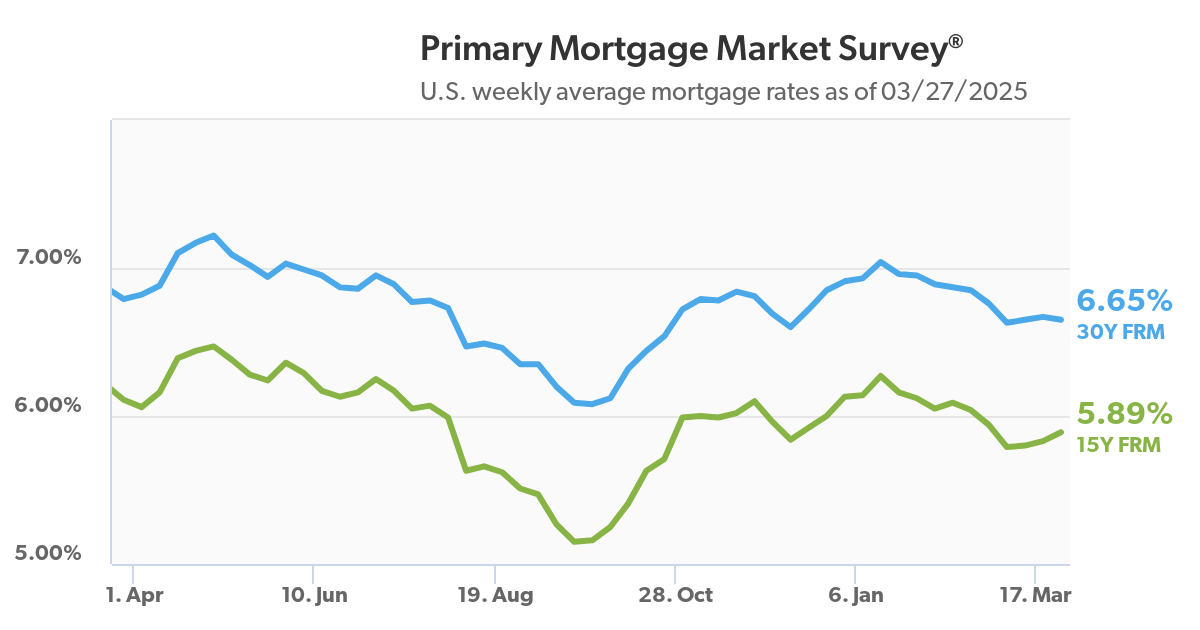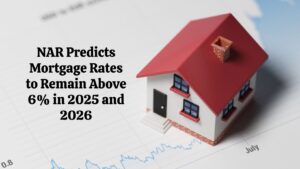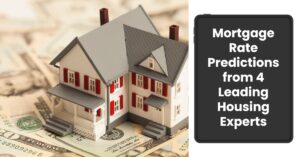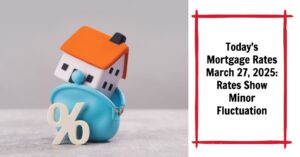Are you dreaming of owning a home in 2025? One of the biggest hurdles is getting a great mortgage rate. The good news is, getting the lowest mortgage interest rate in 2025 is possible if you take the right steps. The best things you can do are boost your credit score, save up a bigger down payment, and shop around for the best deals.
As someone who has been around the real estate block a few times, both personally and professionally, I know how intimidating the mortgage process can be. I've seen firsthand how a little preparation can save you thousands, maybe even tens of thousands, of dollars over the life of your loan. So, let's break down exactly what you need to do to snag that low rate in 2025.
How to Get the Lowest Mortgage Interest Rate in 2025?
Understanding the 2025 Mortgage Rate Game
Before we dive into the how-to, let's understand what impacts mortgage rates. It's not just some random number lenders pull out of a hat. A bunch of things influence them, including:
- The Economy: Things like inflation and how well the economy is doing play a big part.
- The Federal Reserve: The Fed's decisions on interest rates trickle down to mortgage rates.
- Your Credit Score: This is a big one! A higher score means you're less risky to lend to.
- Your Down Payment: Putting more money down shows you're serious and reduces the lender's risk.
- Your Debt-to-Income Ratio (DTI): How much of your income goes to debt payments? Lenders want to see a manageable number.
Right now, in March 2025, the average 30-year fixed mortgage rate is around 6.65% according to Freddie Mac. But don't let that number scare you! Your individual rate can be much lower (or, sadly, higher) depending on your situation.
Your Action Plan for a Rock-Bottom Rate
Okay, let's get down to business. Here's exactly what you need to do:
1. Become a Credit Score Superstar:
Your credit score is like your financial report card. A score of 760 or higher is the sweet spot to get the best mortgage rates.
- Pay Bills On Time: Set reminders, automate payments – do whatever it takes! Late payments are credit score killers.
- Reduce Credit Card Balances: Aim to keep your balances below 30% of your credit limit. The lower, the better.
- Check Your Credit Report: Get a free copy of your credit report from AnnualCreditReport.com. Look for any errors and dispute them right away.
Table: Example Mortgage Rates Based on Credit Score (January 2025 Data)
| Credit Score Range | Estimated Interest Rate |
|---|---|
| 760-850 | 7.242% |
| 700-759 | 7.449% |
Disclaimer: These rates are for example purposes only and will depend on the prevailing market conditions when you plan to apply.
2. Supercharge Your Down Payment Savings:
Putting down 20% or more has several advantages:
- Avoid Private Mortgage Insurance (PMI): PMI protects the lender if you stop making payments. If you put down less than 20%, you'll likely have to pay it.
- Lower Interest Rate: Lenders see you as less risky when you have more skin in the game.
- Smaller Loan Amount: Less debt means less interest paid over the life of the loan.
Personal Thought: I know saving for a down payment can feel impossible, especially with rising rents and other expenses. But even small, consistent savings add up over time. Set a realistic savings goal and automate your contributions. You'll be surprised how quickly it grows!
3. Play the Loan Term Game:
You have two main options: 15-year or 30-year mortgages.
- 15-Year Mortgage: Lower interest rate, higher monthly payments, build equity faster, pay off your loan in half the time!
- 30-Year Mortgage: Higher interest rate, lower monthly payments, more flexibility in your budget.
As of March 2025, a 15-year fixed rate is around 5.89%, while a 30-year is around 6.65%, according to Freddie Mac. That difference adds up to big savings over the life of the loan.
Table: Comparing 15-Year vs. 30-Year Mortgage (Example)
| Loan Feature | 30-Year Mortgage | 15-Year Mortgage |
|---|---|---|
| Loan Amount | $300,000 | $300,000 |
| Interest Rate | 6.65% | 5.89% |
| Monthly Payment | $1,926 | $2,514 |
| Total Interest Paid | $393,360 | $152,520 |
Important Consideration: Make sure you can comfortably afford the higher monthly payments of a 15-year mortgage before committing. Otherwise, you risk stretching your budget too thin.
4. Adjustable-Rate Mortgages (ARMs): Proceed with Caution:
ARMs typically start with a lower interest rate than fixed-rate mortgages. However, after a set period (usually 5, 7, or 10 years), the rate adjusts based on market conditions.
Current Market Anomaly: As of March 2025, something unusual is happening: 5/1 ARMs are averaging around 7.01%, which is actually higher than the 30-year fixed rate. This is not the typical scenario, so make sure you pay close attention!
- If you plan to move or refinance before the rate adjusts, an ARM might be worth considering.
- If you plan to stay in the home long-term, a fixed-rate mortgage is generally the safer bet.
5. Become a Mortgage Shopping Ninja:
Don't just settle for the first rate you're offered. Shop around and compare offers from at least three to five lenders.
- Check Online Lenders: They often have competitive rates and streamlined processes.
- Talk to Local Banks and Credit Unions: They may offer personalized service and special deals.
- Consider a Mortgage Broker: They can shop around for you and find the best rates from multiple lenders.
Expert Tip: Focus on the Annual Percentage Rate (APR). The APR includes the interest rate plus other fees and costs, giving you a more accurate picture of the total cost of the loan.
6. Pay for Points (Maybe):
Discount points are fees you pay upfront to lower your interest rate. One point typically costs 1% of the loan amount and reduces the rate by 0.25%.
- Calculate the Break-Even Point: How long will it take for you to recoup the cost of the points through lower monthly payments? If you plan to stay in the home long enough, paying for points can be a smart move.
- Use an Online Mortgage Calculator: There are many free calculators online that can help you determine if paying for points is worthwhile.
7. Lock in Your Rate at the Right Time:
A rate lock secures your interest rate for a set period (usually 30 to 60 days) while your loan is being processed.
- Monitor Market Trends: If rates are trending downward, you might want to wait to lock.
- Consider a Float-Down Option: Some lenders offer float-down options, allowing you to get a lower rate if rates drop after you lock.
8. Keep Your Debt-to-Income Ratio (DTI) Low:
Lenders want to see that you can comfortably afford your mortgage payments. A DTI below 43% is generally preferred.
- Pay Down Existing Debt: Focus on paying off high-interest debt like credit cards.
- Increase Your Income (If Possible): A side hustle or a promotion at work can help lower your DTI.
9. Show Off Your Employment Stability:
Lenders like to see a stable employment history. Aim for at least two years of steady employment in the same field.
- Self-Employed Borrowers: Be prepared to provide tax returns and other documentation to verify your income.
10. Explore Government-Backed Loans:
If you qualify, government-backed loans like FHA, VA, and USDA can offer competitive rates and terms.
- FHA Loans: Lower credit score requirements and down payment options.
- VA Loans: No down payment required for eligible veterans.
- USDA Loans: No down payment required for eligible rural homebuyers.
Table: Government-Backed Loan Programs
| Loan Program | Eligibility | Key Benefits |
|---|---|---|
| FHA | Borrowers with lower credit scores and down payments | Lower credit score requirements, smaller down payment options |
| VA | Eligible veterans, active-duty military members, and surviving spouses | No down payment, competitive interest rates, no private mortgage insurance |
| USDA | Homebuyers in eligible rural areas | No down payment, low interest rates |
Recommended Read:
Mortgage Rates Drop: Can You Finally Afford a $400,000 Home?
Expect High Mortgage Rates Until 2026: Fannie Mae's 2-Year Forecast
Beyond the Basics: Extra Tips for 2025
- Consider Your Career: Certain professions (like doctors or teachers) may qualify for special mortgage programs.
- Automatic Payments: Some lenders offer discounts for setting up automatic payments.
- First-Time Homebuyer Programs: Check for state and local programs that offer down payment assistance or other benefits.
- Don't Forget Closing Costs: Factor in closing costs when budgeting for your home purchase. These can include appraisal fees, title insurance, and taxes.
Staying Informed: Keep an eye on economic forecasts and mortgage rate predictions from reputable sources like Fannie Mae and Freddie Mac. This will help you time your home purchase and rate lock strategically.
Final Thoughts
Getting the lowest mortgage interest rate in 2025 takes effort and planning. But by following these strategies, you can significantly reduce your borrowing costs and achieve your dream of homeownership. Remember to focus on improving your credit score, saving a larger down payment, and shopping around for the best deal. Good luck!
Work With Norada, Your Trusted Source for
Real Estate Investments
With mortgage rates fluctuating, investing in turnkey real estate
can help you secure consistent returns.
Expand your portfolio confidently, even in a shifting interest rate environment.
Speak with our expert investment counselors (No Obligation):
(800) 611-3060
Also Read:
- Are Ultra-Low 2% and 3% Mortgage Rates Ever Coming Back?
- Will Mortgage Rates Go Down in 2025: Morgan Stanley's Forecast
- Mortgage Rate Predictions 2025 from 4 Leading Housing Experts
- Mortgage Rates Forecast for the Next 3 Years: 2025 to 2027
- 30-Year Mortgage Rate Forecast for the Next 5 Years
- 15-Year Mortgage Rate Forecast for the Next 5 Years
- Why Are Mortgage Rates Going Up in 2025: Will Rates Drop?
- Why Are Mortgage Rates So High and Predictions for 2025
- Will Mortgage Rates Ever Be 3% Again in the Future?
- Mortgage Rates Predictions for Next 2 Years
- Mortgage Rate Predictions for Next 5 Years
- How Lower Mortgage Rates Can Save You Thousands?
- How to Get a Low Mortgage Interest Rate?
- Will Mortgage Rates Ever Be 4% Again?
